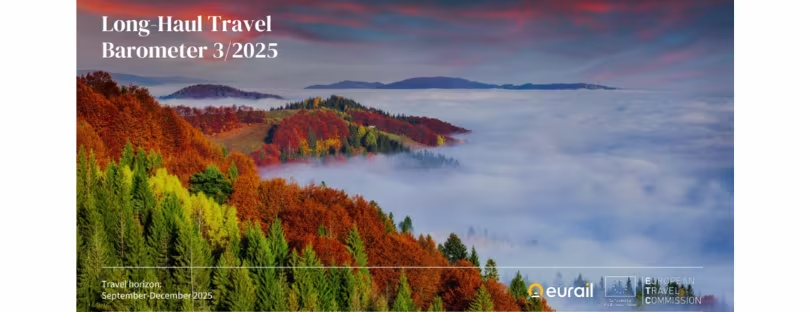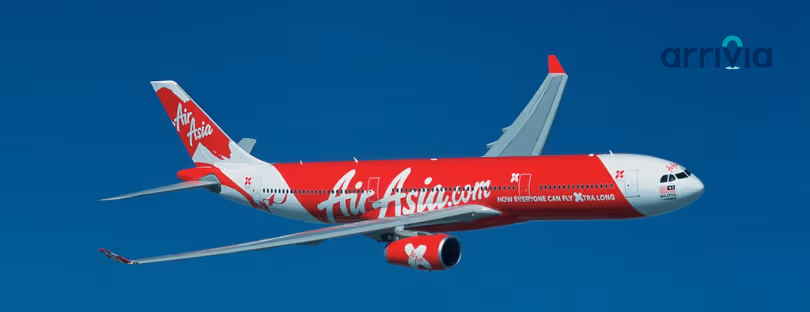
Europe Tops Safe Travel Rankings for 2025 – But Costs Bite
Europe continues to hold its crown as the world’s safest and most trusted travel destination, according to the latest Long-Haul Travel Barometer (3/2025), published by the European Travel Commission (ETC) and Eurail BV. Even as global travel demand wobbles, Europe’s reputation for stability and personal security is proving remarkably resilient.
The September–December 2025 outlook shows that while fewer long-haul travellers overall are heading abroad, those who do are sticking with Europe. Safety remains the decisive factor – but rising costs could put that loyalty to the test.
Long-haul intentions dip, but Europe holds steady
For autumn and early winter, 55% of travellers in key overseas markets plan to head abroad, down four points compared with 2024. Yet despite this global cooling, 38% still intend to visit Europe—exactly the same share as last year.
That stability matters. It shows that while external shocks—inflation, geopolitical tension, economic slowdown – dampen long-haul demand, Europe’s core appeal endures. People trust it. They know what they’ll get: safe cities, reliable infrastructure, and cultural icons.
Who’s still coming – and who’s hesitating?
The report paints a mixed picture when it comes to Europe’s source markets.
- China remains the powerhouse, with 69% planning a European trip this autumn. That’s still the world’s highest level of interest – but a significant slide from 83% last year. China’s economy and shifting domestic priorities are clearly nudging travellers toward shorter, closer-to-home breaks.
- Brazil holds relatively steady at 46% (down just 2%).
- Australia ticks upward, with 37% now considering Europe, compared with 33% last year.
- Canada slips slightly, from 39% to 35%, as cost consciousness creeps in.
- The United States is showing a rebound: 29% of US respondents say they’re Europe-bound, up six points, mirroring South Korea’s jump to 33%. Both markets are driven by strong cultural pull and Europe’s image as a safe haven.
- Japan lags behind at 20%, but is creeping upwards – a slow but steady recovery.
What this mix shows: Europe remains the dream trip for many, but the balance between affordability and safety is shifting market by market.
Safety remains Europe’s trump card
If you ask travellers why Europe continues to win out, the answer is clear: safety.
The ETC survey confirms that Europe is seen as the safest region worldwide, ranking top across political stability, low crime, limited natural hazards, and generally peaceful social relations. In today’s travel landscape, where risk perception plays a bigger role than ever, this gives Europe a competitive edge that Asia-Pacific, the Middle East, and even North America struggle to match.
As ETC President Miguel Sanz put it:
“Safety and stability remain Europe’s strongest advantages in an uncertain world. At the same time, this research reminds us that affordability must be addressed if we are to keep Europe accessible to younger generations.”
That warning is key: Europe can’t live on reputation alone.
The affordability challenge
Costs are the one area where Europe risks pricing itself out. 42% of long-haul travellers cite affordability as their biggest barrier, and among younger travellers that figure soars to 61%.
The average planned spend is €100–200 per person, per day, but fewer travellers than last year expect to go beyond €200. In China, the share of big spenders has fallen from 38% to 25%. In Brazil, from 45% to 38%.
This doesn’t mean travellers won’t come – but they’ll be choosier, hunt for value, and possibly cut trips shorter. Destinations that fail to adapt with more flexible, budget-conscious offers could lose out to rivals in Asia-Pacific or even Latin America, where affordability is stronger.
Old favourites vs. rising stars
France (38%), Italy (31%), the UK (26%), Germany (25%), and Spain (24%) remain Europe’s perennial top picks. But what’s striking in this year’s barometer is the rise of the Nordics.
- Norway jumps from 9% to 12%
- Finland climbs from 7% to 10%
- Iceland grows from 5% to 8%
Why? The draw of nature, the Northern Lights, and a sustainable travel image. These destinations are reaping the rewards of Europe’s broader narrative shift toward eco-conscious tourism.
The multi-country mindset
Another defining trend: 73% of long-haul visitors plan to visit more than one European country in a single trip.
Chinese travellers lead the pack, with plans to hop between 5.5 destinations on average – up sharply from 3.8 last year. For them, Europe isn’t one destination – it’s a package deal of history, culture, and landscapes.
This dovetails with sustainable transport trends. Trains are becoming the backbone of multi-country itineraries. 38% of respondents say they’ll travel by train within Europe, with car rental following at 32%. Meanwhile, traditional full-service flights within Europe are down by 18%.
It’s clear that Europe’s integrated mobility ecosystem – high-speed rail, cross-border passes, car-sharing – is not just a sustainability story, but also a competitive advantage compared to regions like North America or Asia, where cross-border mobility remains less seamless.
What this means for Europe’s competitors
When you step back, the story is as much about Europe’s rivals as it is about Europe itself.
- Asia-Pacific destinations like Japan, Thailand, and South Korea are recovering fast but still carry mixed safety perceptions and, in some cases, restrictive entry requirements.
- North America offers cultural and urban draws but continues to wrestle with perceptions of safety and high costs.
- The Middle East is investing heavily in tourism infrastructure (Saudi Arabia, UAE, Qatar), but still struggles with trust among first-time long-haul visitors.
Compared to these, Europe’s combination of trust, stability, and infrastructure remains unique. But affordability is where its competitors could start to close the gap.
The bigger picture: Europe must balance three pillars
Taken together, the barometer signals that Europe’s travel future depends on balancing three interconnected factors:
- Safety – Europe is still the global benchmark.
- Sustainability – Train travel, Nordics momentum, and multi-country flexibility show progress.
- Affordability – The Achilles’ heel. If not addressed, it risks undermining the first two strengths.
Reliable benchmarks back this up. Data from the UN World Tourism Organization (UNWTO) confirms that safety is the leading driver of destination choice in 2025, but cost is the leading deterrent. Meanwhile, OECD tourism outlooks note that Europe’s inflation-adjusted prices remain among the highest globally, particularly in major capitals.
Conclusion: Europe is safe – but must stay smart
Europe’s status as the world’s safest destination isn’t just a slogan—it’s backed by traveller sentiment, comparative data, and global perception. That reputation is priceless in an uncertain travel era.
But safety alone won’t pay the bills. Travellers are sending a clear message: they want value as well as security. If Europe doesn’t adapt with more affordable offers—from budget-friendly accommodation to flexible transport passes—it risks losing ground to Asia-Pacific or even Latin America, where affordability is stronger and safety perceptions are slowly improving.
The rise of Nordic destinations and the momentum of sustainable mobility prove that Europe can innovate and diversify. The challenge now is ensuring that innovation is accessible to all budgets, not just premium travellers.
In short, Europe is winning on safety, but the next battle will be won or lost on affordability.
- AIRHUB
-
eSIM for
Europe
34 countries
-
1 GB – 7 days – €2.99
3 GB – 30 days – €5.12
10 GB – 30 days – €11-09
- aloSIM
-
eSIM for
Europe
32 countries
-
1 GB – 7 days – €5.00
3 GB – 30 days – €13.00
10 GB – 30 days- €36.00
- GigSky
-
eSIM for
Europe
36 countries
-
1 GB – 7 days – €6.99
3 GB – 15 days – €11.19
10 GB – 30 days – €27.99
- iRoamly
-
eSIM for
Europe
39 countries
-
1 GB – 7 day – €6.83
3 GB – 15 days – €10.24
10 GB – 30 days – €18.77
- Maya Mobile
-
eSIM for
Europe
34 countries
-
1 GB – 7 days – –
5 GB – 15 days – €5.99
10 GB – 30 days- €13.99
- NOMAD
-
eSIM for
Europe
36 countries
-
1 GB – 7 days – €4.71
3 GB – 15 days – €10.27
10 GB – 30 days – €15.41
- UBIGI
-
eSIM for
Europe
29 countries
-
500 MB – 1 day – €2.00
3 GB – 30 days – €8.00
10 GB – 30 days – €19.00
- VOIA
-
eSIM for
Europe
34 countries
-
1 GB – 7 days – €2.69
3 GB – 15 days – €5.05
10 GB – 30 days- €11.70
The Best eSIM Finder brings together 100+ providers in one place, giving you a clear view of everything from data limits and business options to tethering, crypto payments, coverage, travel extras, refund policies, discounts, and reviews—so you don’t just compare plans, you understand which one truly fits your needs. Start exploring today and find the plan that fits you best.


















